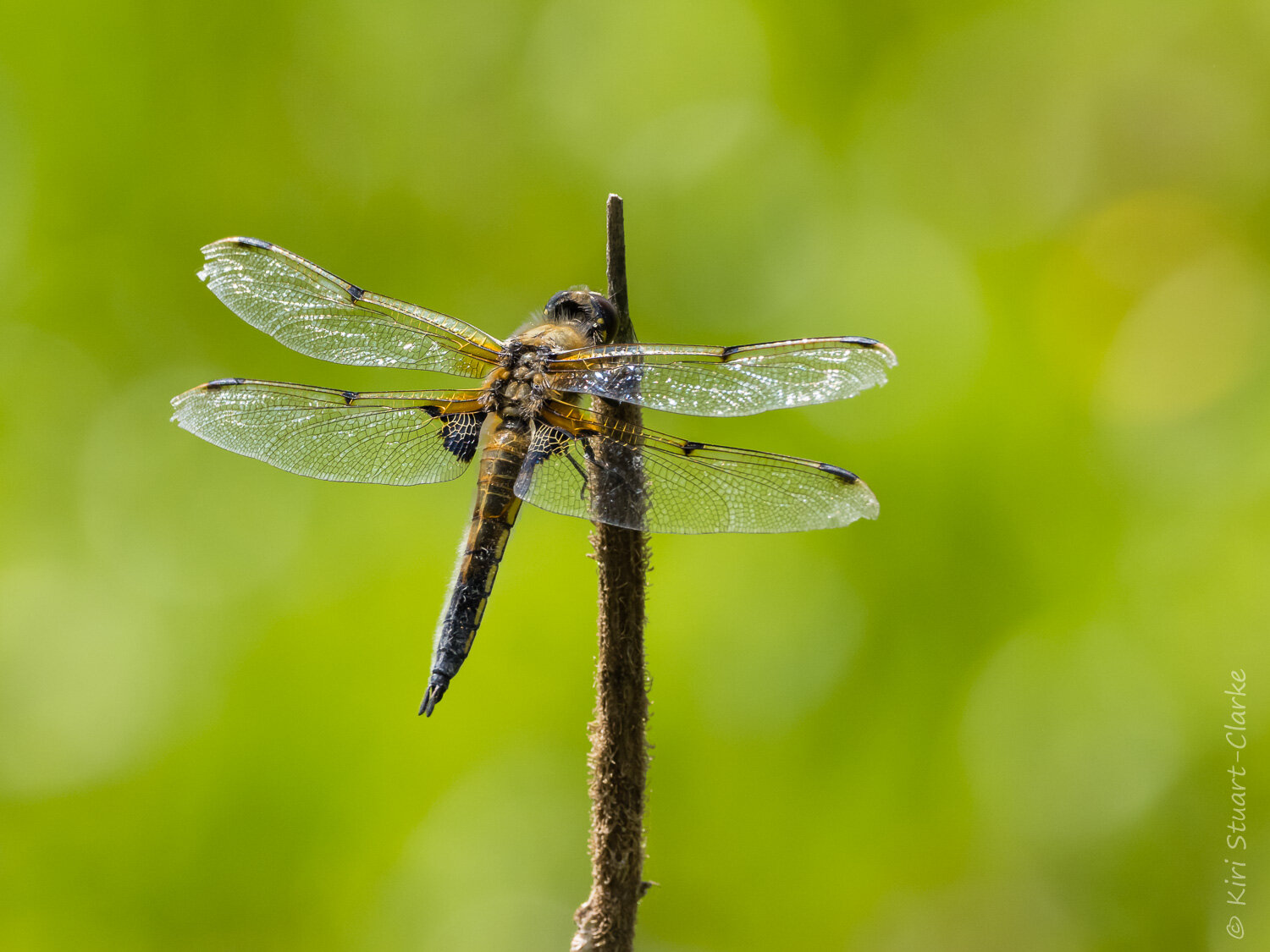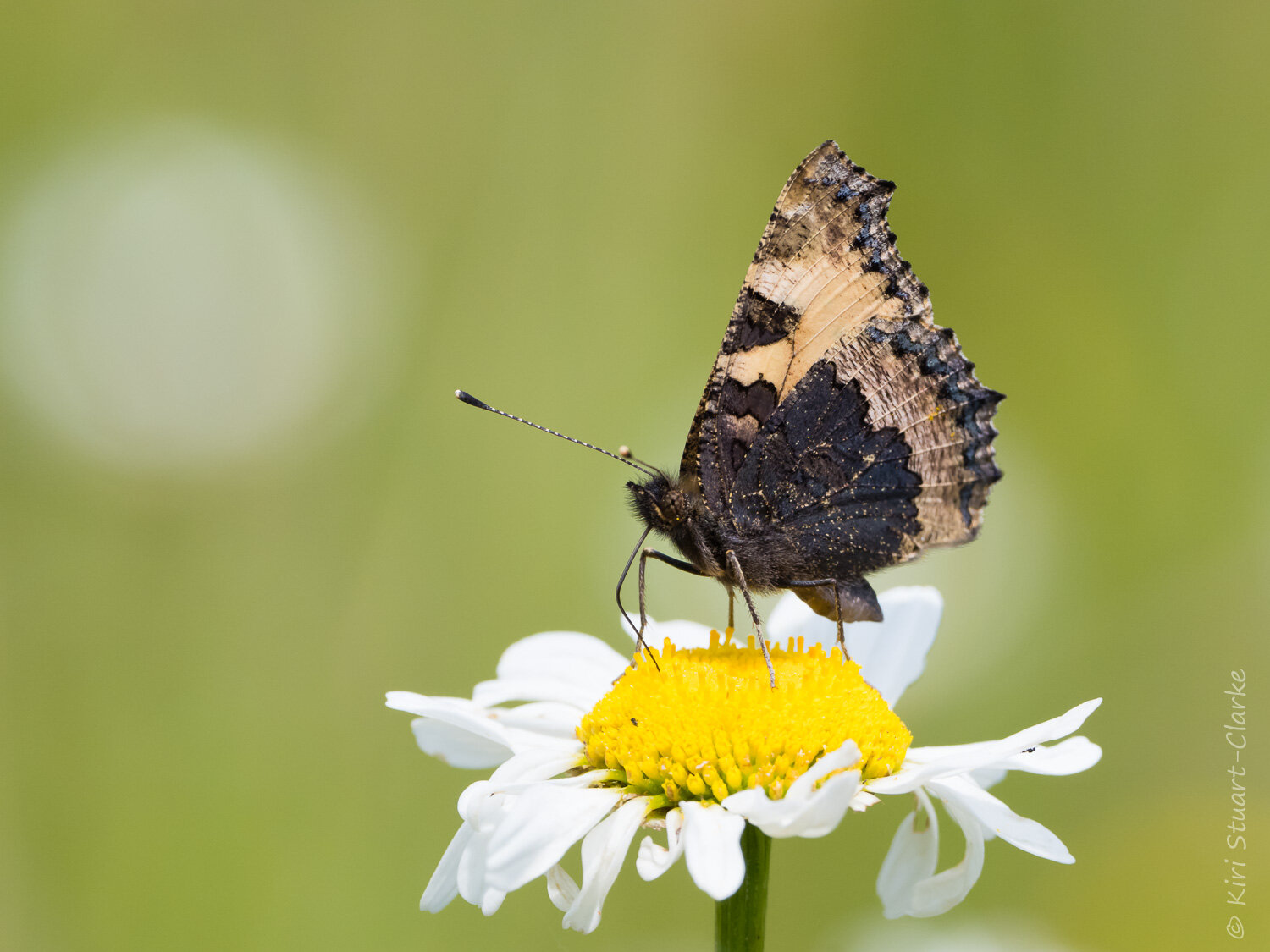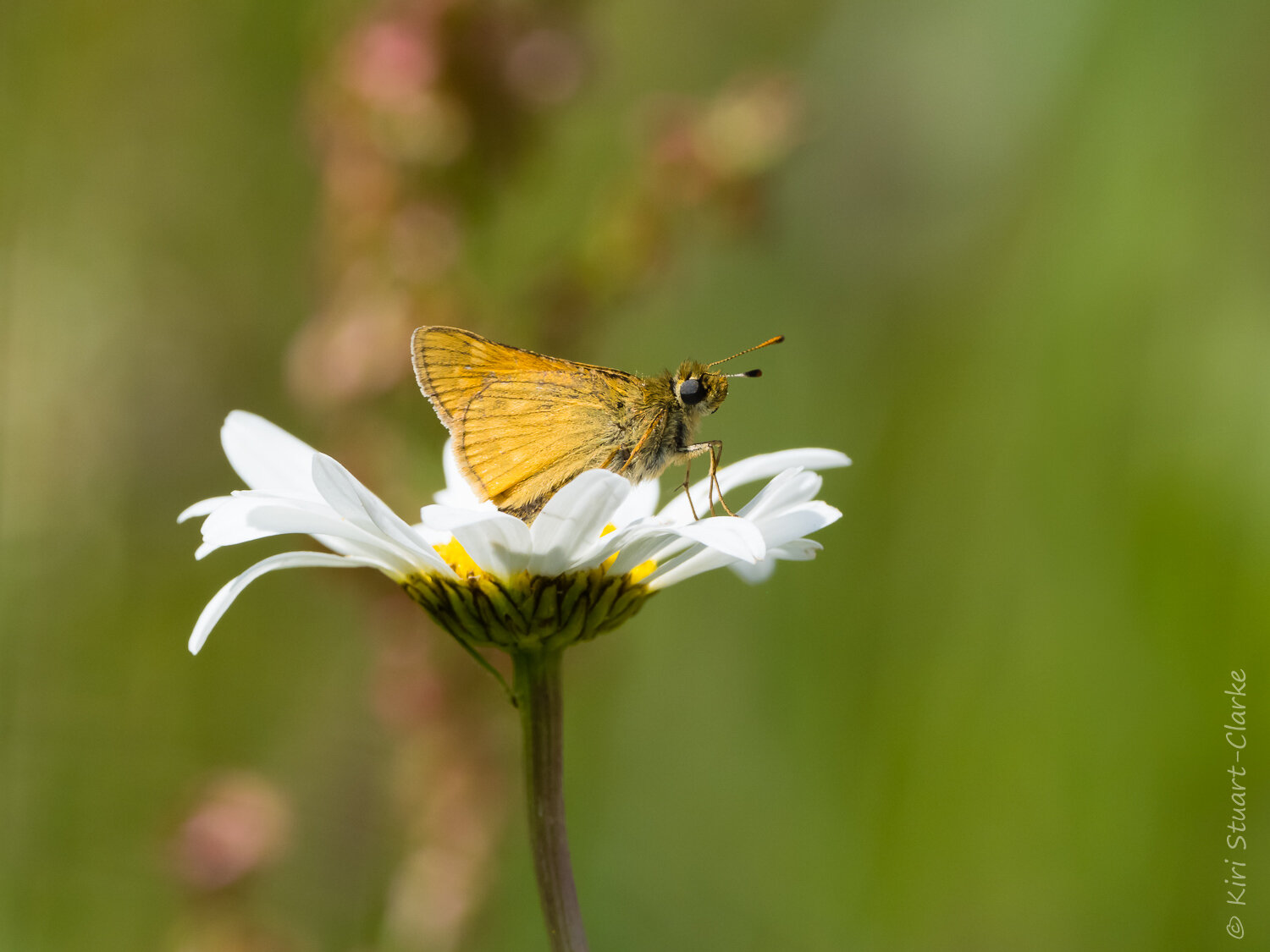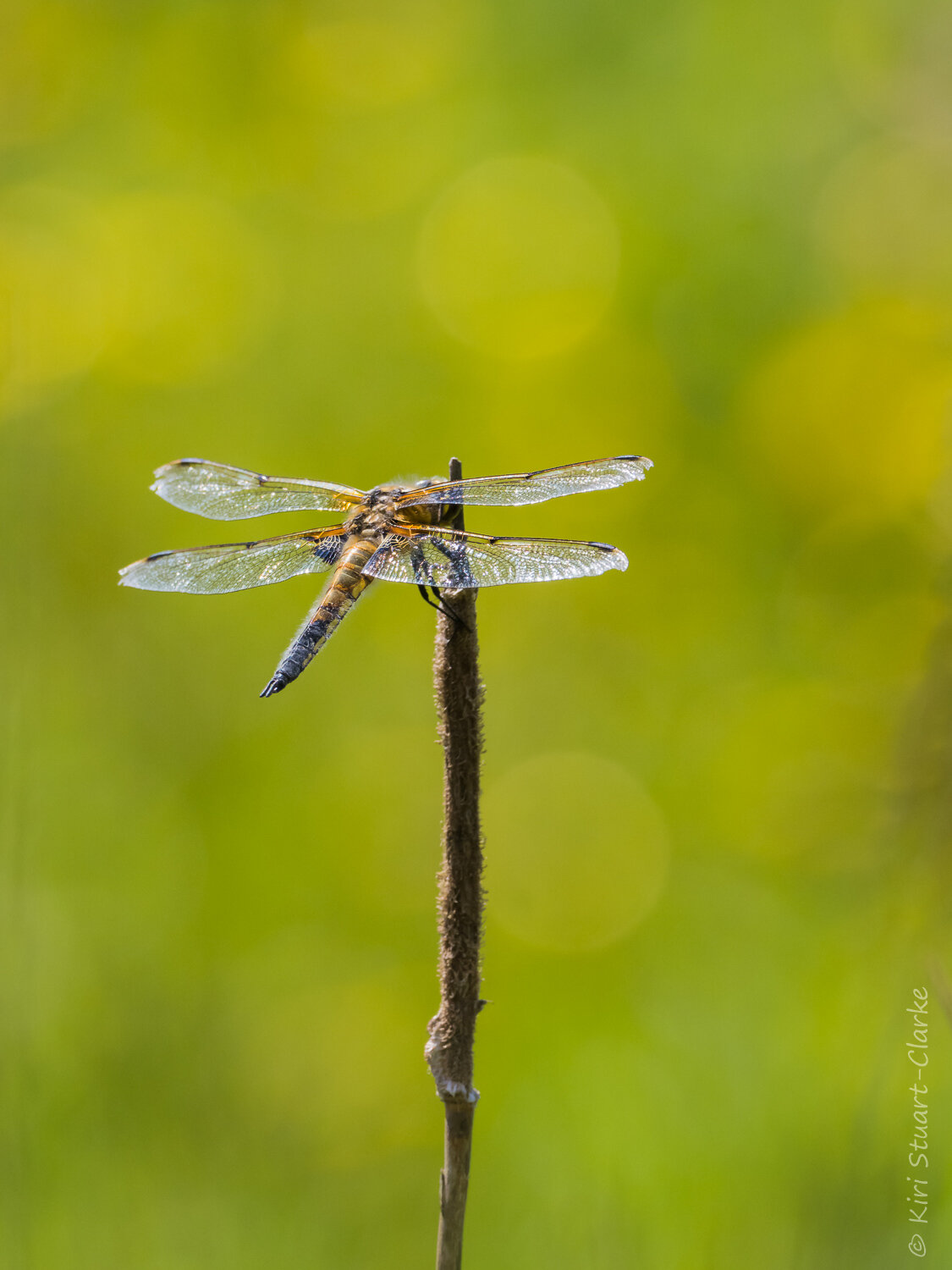The return of fine weather after a week of rain and low temperatures seemed to mark the season’s transition from late Spring into mid Summer. It also brought a flurry of emergences in and arrivals to my wildlife garden.
The Sparrows and Blackbirds have both fledged and are cheeping and chirring charmingly at their parents next to the feeders. As the nectar- and colour-rich magenta Knapweed starts to emerge en masse so do the meadow butterflies. The Meadow Brown and Large Skipper butterflies have emerged, the latter slightly battered so perhaps he had the misfortune to emerge right before the bad weather. In the old Rose garden Goldfinches are frequently landing on the Knapweed buds and a fresh Small Tortoiseshell has been enjoying the Oxeye daisies. A female Common Blue has finally materialised so hopefully my lonesome early male will find his partner.
The other arrival surprised me a little, I’ve been worrying about my pond both for its survival through the drought but also more broadly, due to the process of succession, the gradual growing in causes acidification from leaf matter and less free space. This affects which species can live in a freshwater pond and last year I saw reduced biodiversity the first time.
But my spirits lifted along with the water level thanks to the arrival of a beautiful Four-spotted Chaser dragonfly. He took up the territory for a day or two, on the second I watched as he mated twice with a passing female then hovered over her on protective sentry duty while she oviposited on leaves. Shortly after he moved on to try his luck elsewhere.





